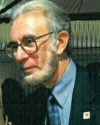How to Prepare for a Global Financial Crash: Rural-Urban Continuum and Electric Vehicles
TRANSCEND MEMBERS, 4 Mar 2019
David Adams | Transition to a Culture of Peace – TRANSCEND Media Service
1 Mar 2019 – In this blog we have often proposed that the culture of war is not sustainable and that the American empire is destined to crash for the same reasons that the Soviet empire crashed. It can be an opportunity for a transition from the culture of war to a culture of peace. However, the crash of the American empire may well be accompanied (caused) by a global financial crash with suffering for ordinary people, as it did for the Soviet people 30 years ago.
In a financial crash the cities are especially vulnerable. They depend on daily food deliveries to supermarkets that often come long distances by plane and truck.
It is precisely this delivery system that is at risk in a global financial crash. Not to mention industrial agriculture. Both depend on adequate supplies of gasoline and diesel fuel for trucks, planes and tractors, and the fuel, in turn, is largely dependent on a global system of oil tankers which, in turn, depends up/on consistent financial support.
To site an historical precedent, following the financial crash of 1929, the number of freighters at sea fell drastically due to lack of financial support. In 1929 the world was less urbanized and the cities were less dependent on food deliveries by plane and truck. Much of their food came from local suppliers who were, in turn, less dependent on industrial methods.
That is no longer the case. Small local farms have been replaced by industrial agriculture that is concentrated in regions far from most cities.
One solution to this problem lies in the recent proposal of José Graziano da Silva, Director-General of the Food and Agriculture Organization (FAO), addressing a UN conference discussing common challenges to the Sustainable Development Goals (SDGs), such as climate change and food security: “Sustainable development calls for the strengthening of rural-urban linkages based on a territorial approach,” he said, pushing for “a rural-urban continuum.”
In fact, this process is already underway on a small scale as cities develop networks of farmer’s markets linked to small farms in the region around them, and as young people increasingly turn to subsistence farming near these cities.
There is a second component needed for this solution: a shift from dependence on fossil fuel for trucks and tractors to use of electric trucks and tractors recharged by solar-powered charging stations.
The Chinese are at the forefront of this with their shift to electric vehicles, and their development of solar energy. We need to learn from them.
A shift to electric tractors and solar charging stations on farms is especially important, but we have little indication that this process has even begun.
How much time do we have to make these changes? Impossible to say. Johan Galtung has predicted the end of the American empire by the year 2020. Will it be accompanied and/or caused by a global financial crash?
In any case, it is not too early to begin the transition to a “rural-urban continuum” based on solar energy and electric vehicles.
_________________________________________________
 Dr. David Adams is a member of the TRANSCEND Network for Peace Development Environment and coordinator of the Culture of Peace News Network. He retired in 2001 from UNESCO where he was the Director of the Unit for the UN International Year for the Culture of Peace. Previously, at Yale and Wesleyan Universities, he was a specialist on the brain mechanisms of aggressive behavior, the history of the culture of war, and the psychology of peace activists, and he helped to develop and publicize the Seville Statement on Violence. Send him an email.
Dr. David Adams is a member of the TRANSCEND Network for Peace Development Environment and coordinator of the Culture of Peace News Network. He retired in 2001 from UNESCO where he was the Director of the Unit for the UN International Year for the Culture of Peace. Previously, at Yale and Wesleyan Universities, he was a specialist on the brain mechanisms of aggressive behavior, the history of the culture of war, and the psychology of peace activists, and he helped to develop and publicize the Seville Statement on Violence. Send him an email.
Go to Original – decade-culture-of-peace.org
DISCLAIMER: The statements, views and opinions expressed in pieces republished here are solely those of the authors and do not necessarily represent those of TMS. In accordance with title 17 U.S.C. section 107, this material is distributed without profit to those who have expressed a prior interest in receiving the included information for research and educational purposes. TMS has no affiliation whatsoever with the originator of this article nor is TMS endorsed or sponsored by the originator. “GO TO ORIGINAL” links are provided as a convenience to our readers and allow for verification of authenticity. However, as originating pages are often updated by their originating host sites, the versions posted may not match the versions our readers view when clicking the “GO TO ORIGINAL” links. This site contains copyrighted material the use of which has not always been specifically authorized by the copyright owner. We are making such material available in our efforts to advance understanding of environmental, political, human rights, economic, democracy, scientific, and social justice issues, etc. We believe this constitutes a ‘fair use’ of any such copyrighted material as provided for in section 107 of the US Copyright Law. In accordance with Title 17 U.S.C. Section 107, the material on this site is distributed without profit to those who have expressed a prior interest in receiving the included information for research and educational purposes. For more information go to: http://www.law.cornell.edu/uscode/17/107.shtml. If you wish to use copyrighted material from this site for purposes of your own that go beyond ‘fair use’, you must obtain permission from the copyright owner.